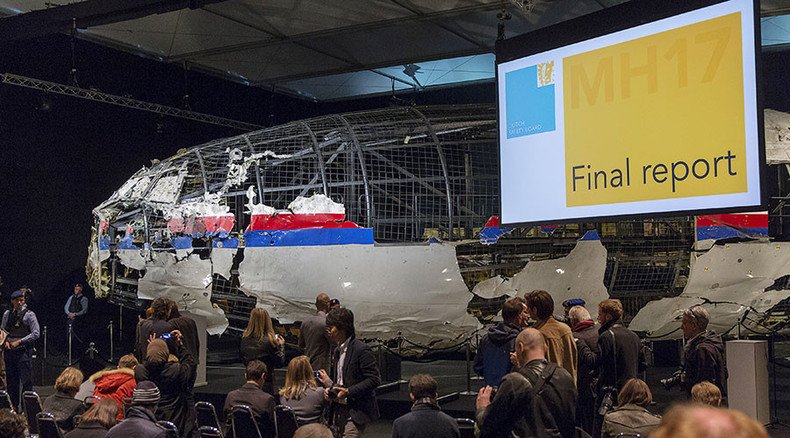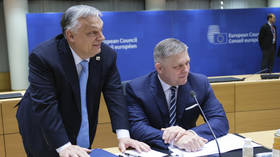Russia rejects Dutch report on MH17, but agrees Ukraine should have closed airspace – regulator

Russia disagrees with the Dutch Safety Board’s report on MH17 crash findings, the Federal Air Transport Agency said. The Dutch party’s answers to Russian comments on the crash are “unsubstantiated and biased,” the regulator said.
The authors of the Dutch report slanted the documents towards their version of events beforehand, and the quality of the probe has been unsatisfactory, Rosaviatsia's head Oleg Storchevoy said in the official statement Wednesday.
The majority of Russia’s comments were not taken into account, the agency added.
The agency, however, supports the Dutch comment on Kiev’s responsibility for not closing the airspace over the armed conflict zone before the MH17 catastrophe.
READ MORE: 8 things we learned through Dutch report, BUK arms maker on MH17 crash in Ukraine
Moscow never pushed forward any versions of the Boeing crash not to put any pressure on the commission, “but the Russian party was unfortunately suspended from the investigation”, Storchevoy said.
Dutch report ignored majority of Russian remarks on MH17 crash - Russian air regulator https://t.co/2ipGpBJ1YDpic.twitter.com/07aDqpDIwB
— RT (@RT_com) October 14, 2015
The destructive fragments of the missile presented in the Dutch final report forces to doubt their authenticity, the Russian transport agency said citing the shape and chemical composition of those fragments.
LISTEN MORE:
“The important information on finding alleged BUK fragments on the scene was hidden from us. We only found out about it during our last meeting in August, when it was said that we would have no more meetings, and none of our further comments would be accepted,” Oleg Storchevoy said.
It is only possible to find out the exact location of the launch by establishing the type of the missile that hit MH17, Storchevoy said.
“We don’t base our calculations on the launch location, but instead do it basing on the rules of conducting such investigations. First of all, calculating the explosion point, establishing the power of the destructive element, as well as the direction of how this element worked with the aircraft. Thus, we establish the missile type,” he added.
#MH17: The Dutch Safety Board publishes final report after fifteen months of investigationWatch full report https://youtu.be/2TdWUTHC49U
Posted by RT Play on 13 октября 2015 г.
Russia has invited the interested countries to join the Russia-led probe into the MH17 crash and provided the Dutch commission the records of all conversations between the Russian air traffic controllers. Data of the Russian locators surveilling the sky on July 17, 2014, is still available.
The missile’s trajectory as presented by the Dutch safety board is incorrect, the Russian aviation agency said.
“The report presented by the Dutch commission uses the calculations by the Almaz-Antey company [the maker of the BUK missile system] on the area of the missile launch, but they are just taken out of context,” Storchevoy said.
“The possible area, indicated in the report, was established basing on the wrong interpretation of the missile-plane encounter,” he added.
Russia's air regulator dissatisfied with Dutch report, doesn’t agree with results; LIVE https://t.co/2ipGpC0Dndpic.twitter.com/cDbIPugPMf
— RT (@RT_com) October 14, 2015
All Russian suggestions that it should participate in the investigation were left unanswered, Storchevoy noted, adding that Kiev, for its part, had failed to provide entire data from its radar in Dnepropetrovsk, claiming that the equipment had been under maintenance.
On Tuesday, BUK manufacturer Almaz-Antey and the Dutch Safety Board presented the results of their separate findings regarding the crash.
The Dutch investigation was aimed at giving technical details about the catastrophe. The Almaz-Antey probe involved two real-life experiments with a plane and a missile.
Another probe conducted by the Joint Investigation Team (JIT) set to determine who was behind the incident is still ongoing, with results expected to be released by the end of this year.
LISTEN MORE:












